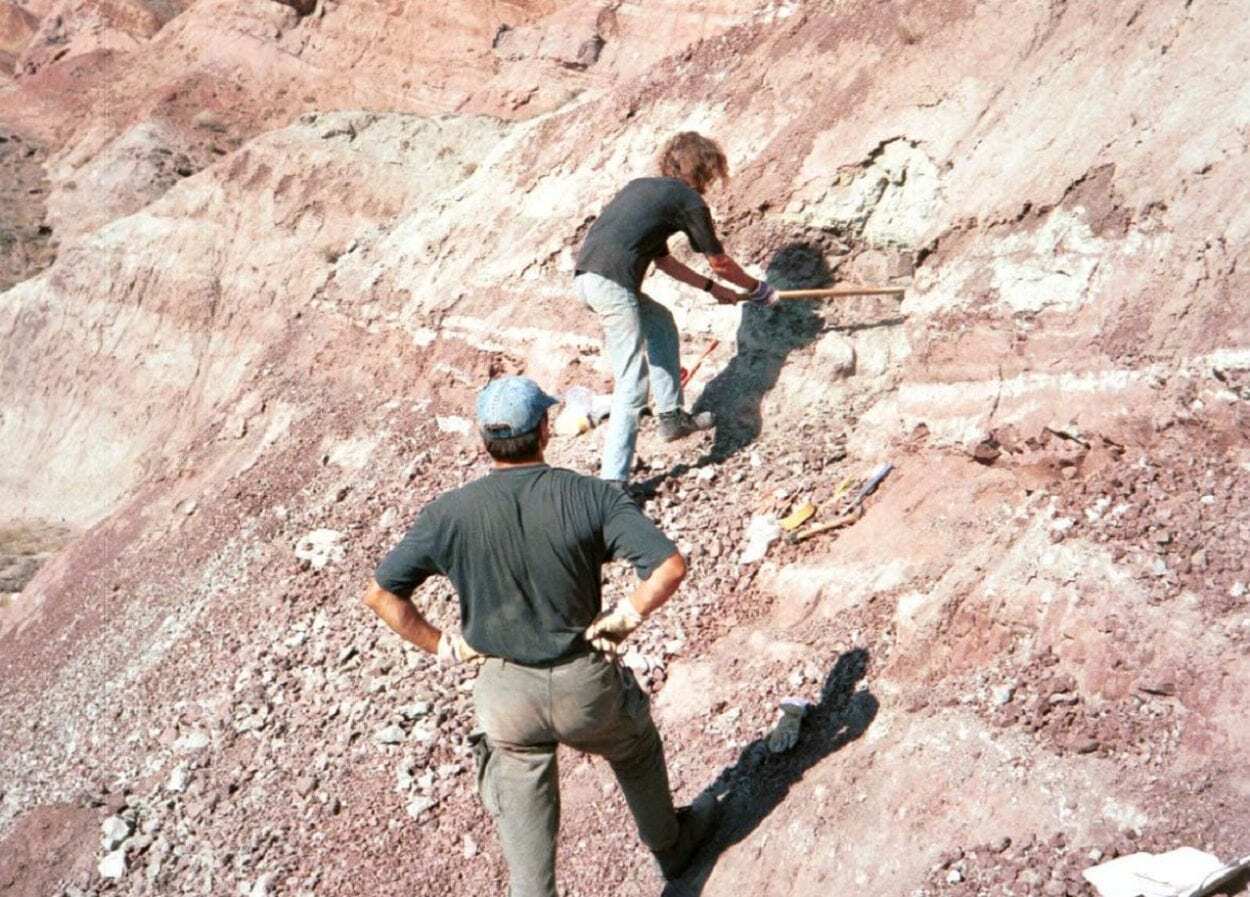The cervical rib of a long-necked dinosaur from northwest China provides the oldest known evidence to date that early mammals fed on dinosaur meat around 160 million years ago.
A research team led by Professor Hans-Ulrich Pfretzschner from the Department of Geosciences at the University of Tübingen discovered bite marks of a mammal the size of a modern shrew on a bone fragment of a sauropod that was approximately 20 meters long and weighed several tons.
The researchers say the mammals were probably eating dinosaur’s carcass; this was the only way for such a small animal to eat a large one. This discovery, which provides information on the life and environment of the early mammals, has been published in the journal The Science of Nature.
“The early mammals lived in the shadow of the dinosaurs for more than 160 million years. On average they reached a weight of about one hundred grams,” says Felix Augustin from the research team, the first author of the new study. “However, we now know that they nevertheless developed an astonishing biodiversity and occupied a large number of ecological niches.”
Alongside the numerous insect-eating ground-dwellers, there were also semi-aquatic, tree-dwelling, digging, and even gliding mammals. This diversity is reflected in their different diets, which researchers can determine indirectly by examining the shape of teeth and jaws. “Direct evidence such as bite marks on bones or stomach contents is very rare,” says Augustin. “Furthermore, all the evidence we have to date dates back to the Cretaceous period at the earliest and is at most about 100 million years old. That’s why our discovery from about 160 million years ago is so special.”
Rich fossil site
In 2000, researchers of a Chinese-German expedition excavated numerous fossils of vertebrates such as turtles and crocodiles, dinosaurs and mammals from the Jurassic period, the time about 160 million years BCE, from what is now the Junggar Basin in the province of Xinjiang in northwest China.
While re-examining the fossil bones, the team noticed tiny gnaw marks on a fragment of bone, which on closer examination turned out to be bite marks made by early mammals. The researchers working in vertebrate paleontology compared the notches with a large number of similar marks on fossilized and unfossilized bones. “The gnaw marks were very similar to those of today’s insect-eating mammals, such as shrews,” says Augustin.
Due to the extreme difference in size, the researchers assume that the mammals ate the remains of one animal only. “The marks provide valuable insights into the biology of these early mammals from China, which according to the reconstructions were very small insectivorous or omnivorous animals. We were able to prove for the first time that they were not above eating carrion,” says Hans-Ulrich Pfretzschner.
This behavior is also seen in modern insectivores and other small mammals such as rodents. The surrounding rock in the Junggar Basin provided additional information about the environmental conditions at the time and suggest that the northwest of China had rivers and floodplains and a dry, warm climate when these dinosaurs were alive.
Header Image Credit : Andreas Matzke








